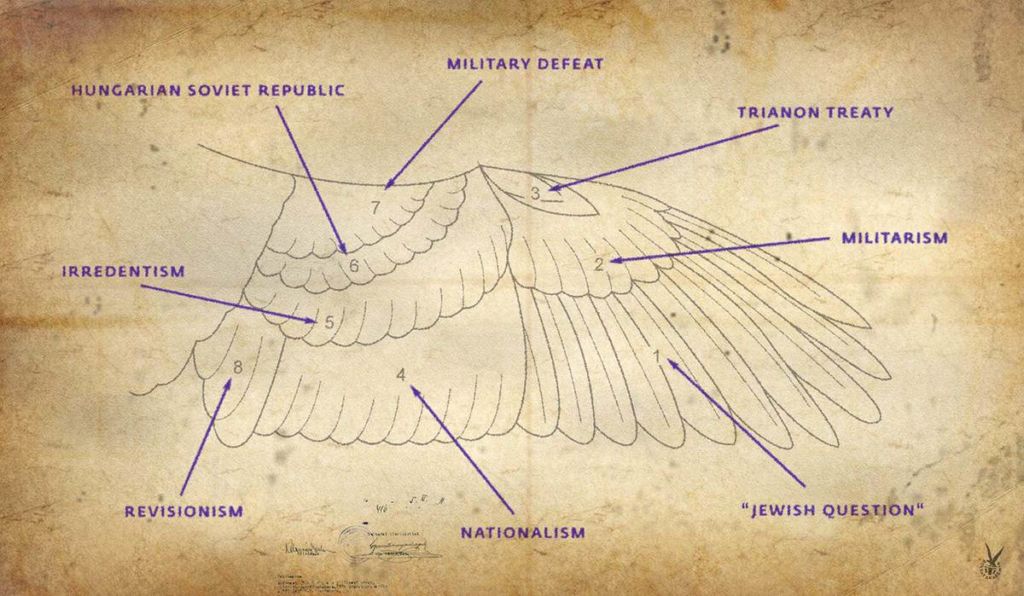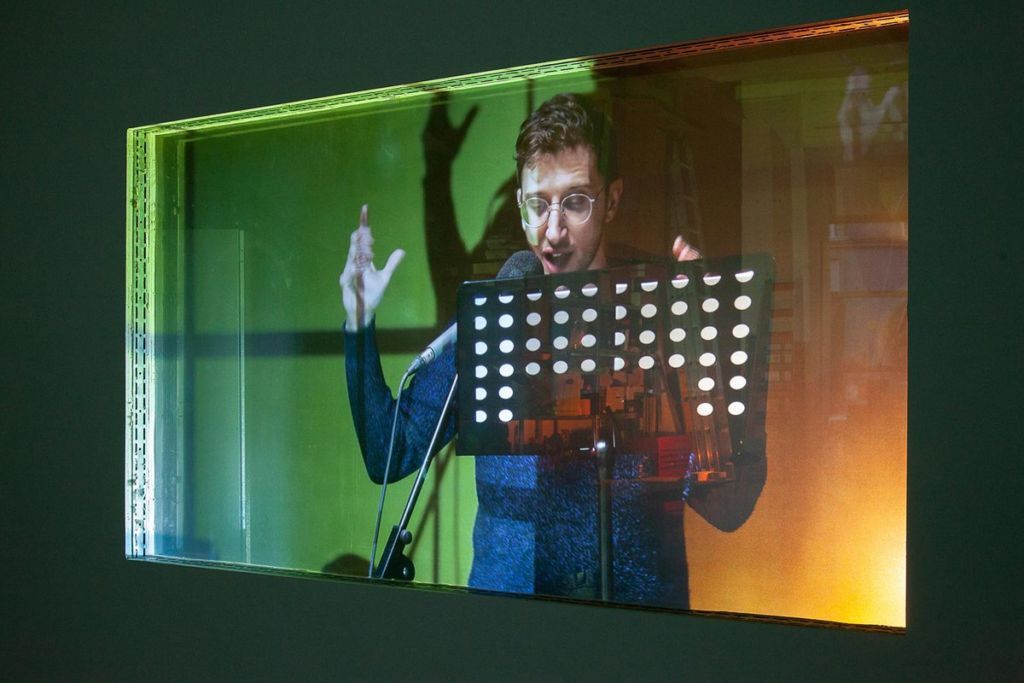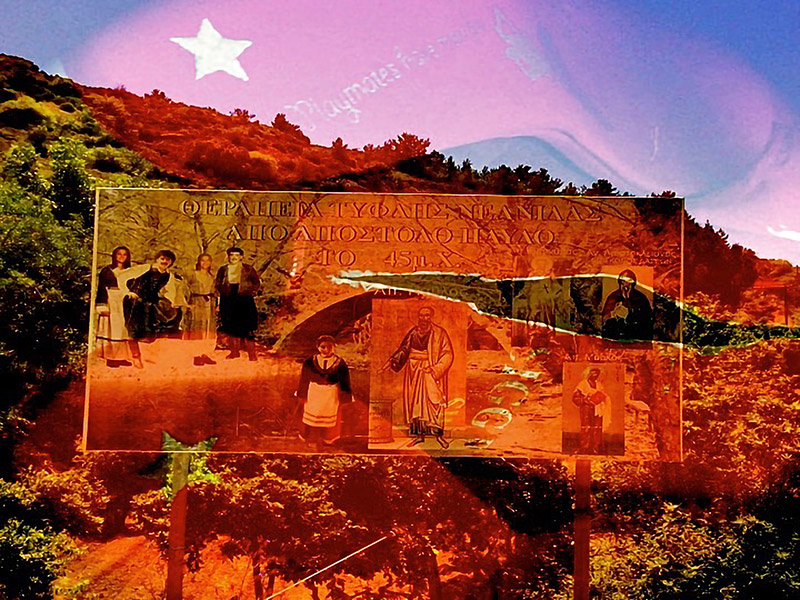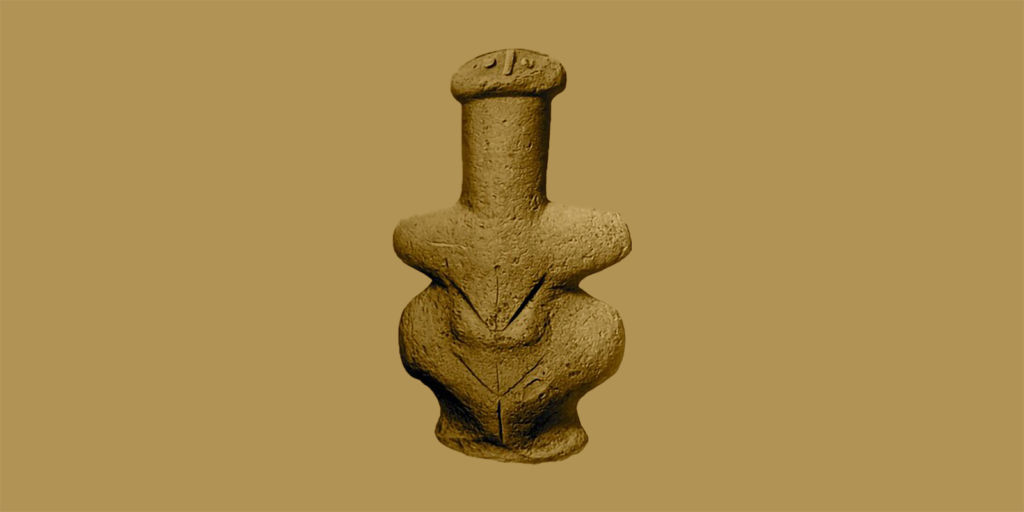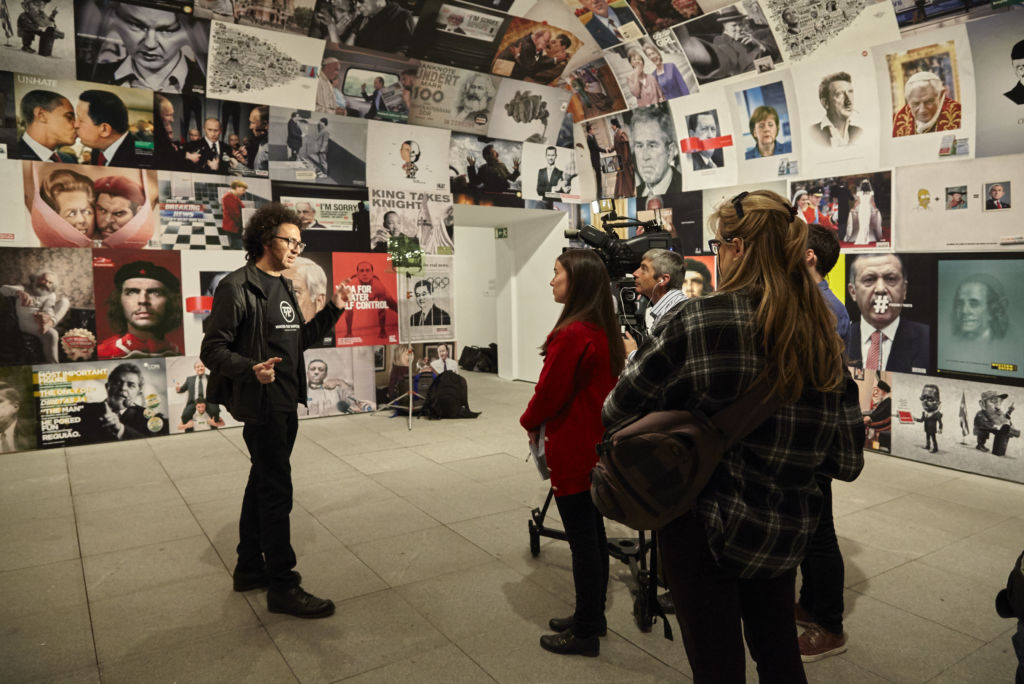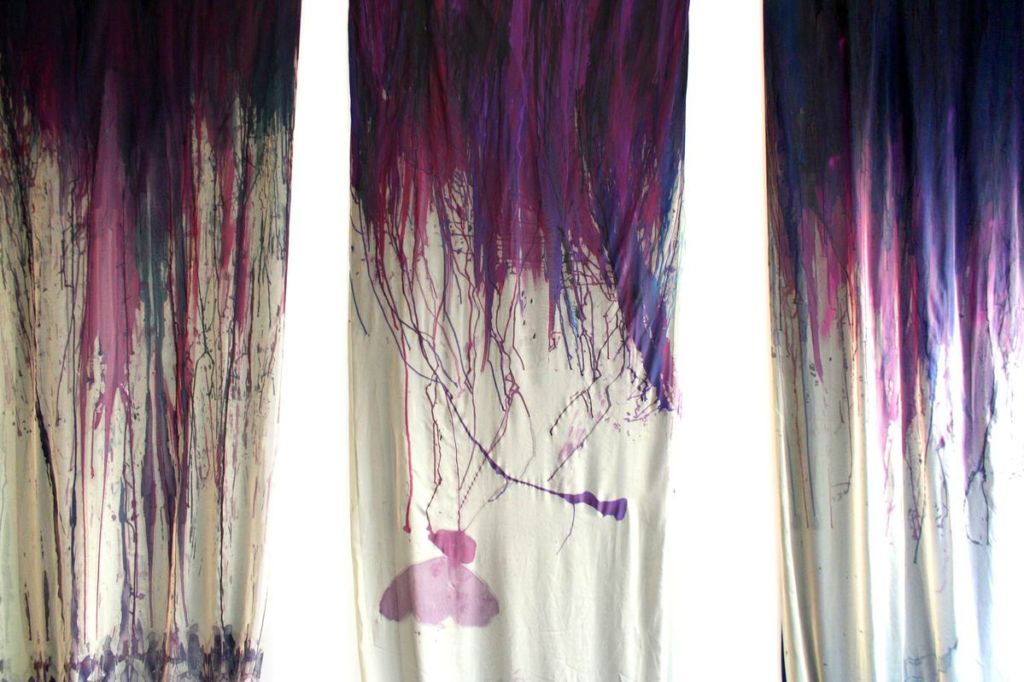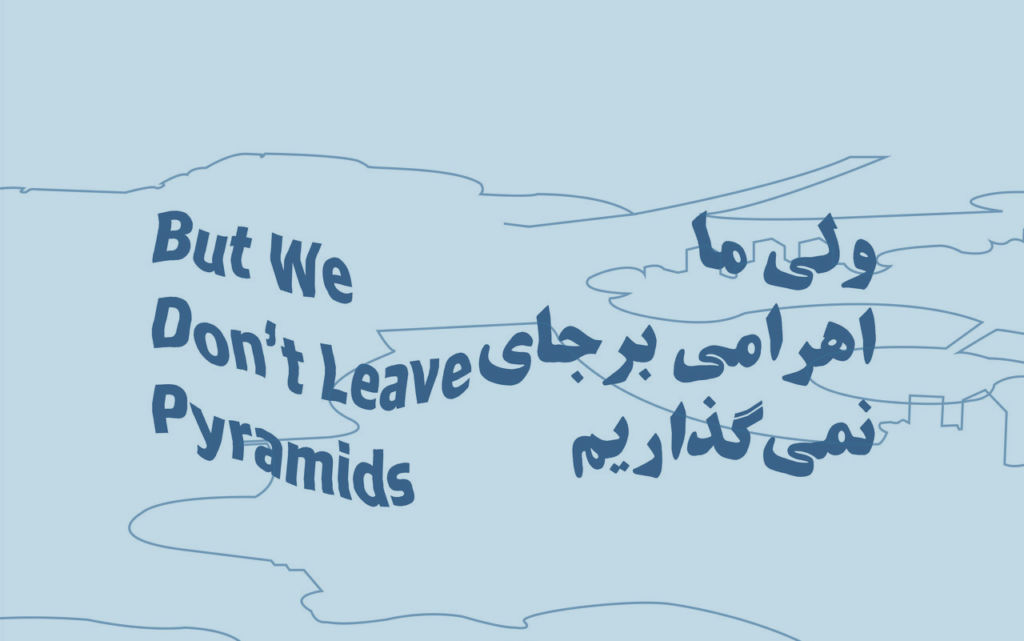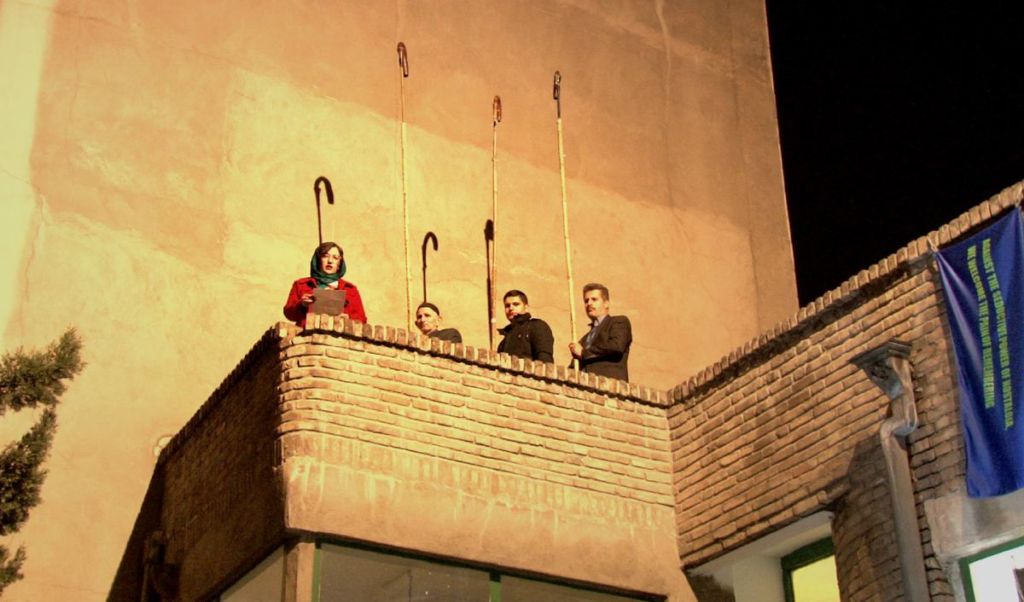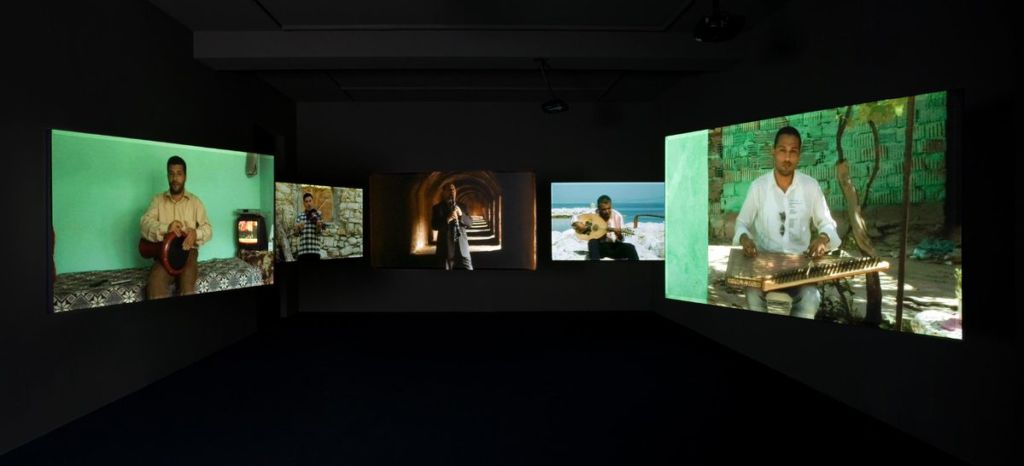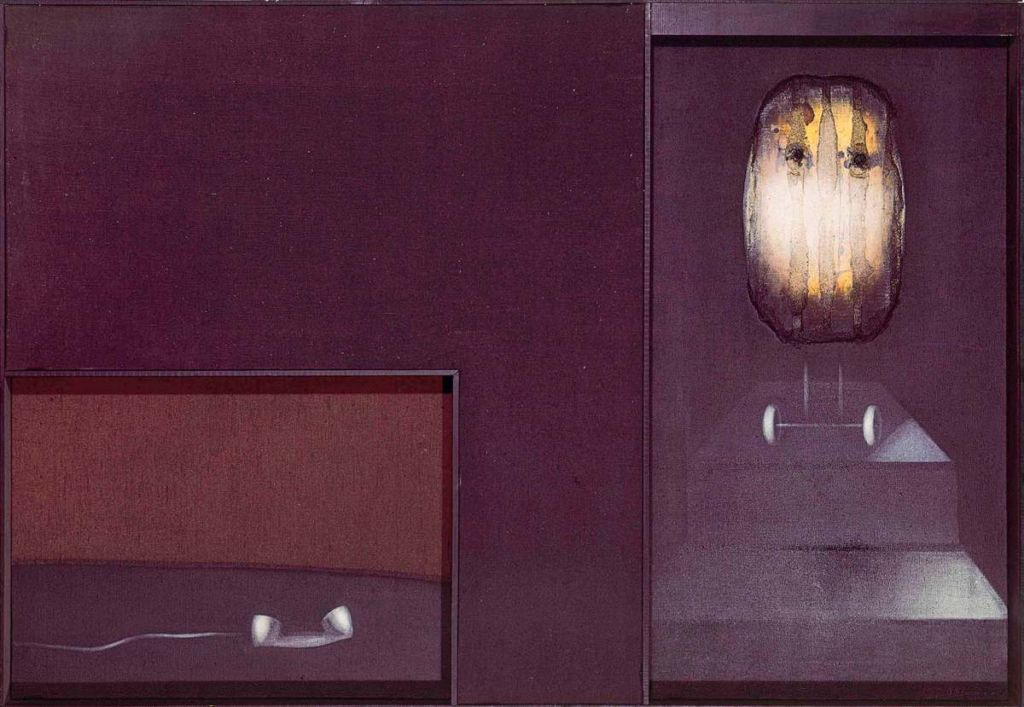There are countless exhibitions, seminars, conferences, books and special magazine or newspaper editions dedicated to “animals”, not to mention studies in the field of human sciences, from anthropology to philosophy, sociology to history, which endeavor to study the cultures of human relationships to other animals. This recent phenomenon, unfolding against the backdrop of the sixth mass extinction of the world’s species, also concerns the visual arts. Aside from illustrating a trend, what else can be proposed?
This text distinguishes between human/animal because it seems to be a relevant distinction for all of the cultural objects on which uphold it. It is clear, however, that one of the things at stake in artistic and theoretical production is to move past this distinction.
Cousteau was an officer in the French Navy.
A comparison clearly established by Cousteau, who says in a voice-over that “A dolphin is not a fish, but a mammal much like a dog.”
We often refer to the animistic model, whose “cosmogonies” could be a useful example, without more details… even though it is all about details and not models…
Such as defined by Charles Baudelaire when he describes a “form molded on an idea”.
Such as proposed by Johan Huizinga: “Having attributed a real existence to an idea, the mind wants to see this idea alive, and can only effect this by personifying it. In this way allegory is born.” The Waning of the Middle Ages, Middlesex, Penguin Books, 1922, p. 206.
Artnet, Artnet news, “Why the Guggenheim’s Controversial Dog Video Is Even More Disturbing Than You Think”, Ben Davis, 20 September 2017, https://news.artnet.com/art-world/so-whats-really-going-on-with-that-disturbing-dog-video-at-the-guggenheim-1100417, last consulted December 8, 2017.
ShangARTGallery, “An Interview with Xu Zhen, Chen Xiaoyun”, 2001 http://www.shanghartgallery.com/galleryarchive/texts/id/588, last consulted on December 8, 2017.
Translator’s note: Some titles are not available in English, their original French titles are “L’Incantation du loup” by Leconte de Lisle, “Le Pélican” by Musset, “Le Cygne” by Sully-Prudhomme and “Le Crapaud” by Hugo.
In A sound County Almanach, New York: Oxford University Press, 1949 (first edition), 1989, pp. 129-130.
Translator’s note: In French one could describe the hoax as an “ânerie”, an act of nonsense or silliness which plays on the French word for donkey, “âne”.
Tranlsator’s note: Here too, there is a play on words. The French “bêtise”, designating an inane act or bad behavior, derives from the French “bête” which means beast/animal and inane/stupid at the same time.
The Daily Mail: “Can jumbo elephants really paint? Intrigued by stories, naturalist Desmond Morris set out to find the truth”, Desmond Morris, February 22, 2009, http://www.dailymail.co.uk/sciencetech/article-1151283/Can-jumbo-elephants-really-paint–Intrigued-stories-naturalist-Desmond-Morris-set-truth.html – socialLinks consluted December 8, 2017.
Ibid.
Performances for Pets, Krõõt Juurak and Alex Bailey http://www.performancesforpets.net/
http://www.performancesforpets.net/info/, last consulted December 8, 2017.
Ibid.
Performances for Pets, op. cit.
Spike Art Daily: “Portrait of Ian Cheng”, Gianni Jetzer, Spike 47, Spring 2016, pp. 94-107 URL https://www.spikeartmagazine.com/en/articles/portrait-ian-cheng last consulted December 8, 2017.
Cura Magazine: “Ian Cheng in conversation with Elvia Wilk”, Cura #23. http://curamagazine.com/contents/23-spotlight-ian-cheng-in-conversation-with-elvia-wilk/ last consulted December 8, 2017.
Today, who could imagine a documentary that purports to explore marine life while having scuba divers set off dynamite in the coral reef, killing hundreds of fish and plants, or where a member of the crew (presented as a passionate deep-sea fisherman) harpoons a sperm whale; where men stand on the backs of sea turtles like in a rodeo, blocking them underwater so they cannot breathe or sitting on them like chairs for a smoke and a long talk; where sharks are battered to death by shovel, axe or rifle. These are the famous scenes from The Silent World, a feature-length documentary by Louis Malle and Jacques-Yves Cousteau implementing extreme technical feats to generate impressive underwater images in color, and which offered cinemagoers a glimpse into a world unknown in 1956.
That same year, the film received the Palme d’or at the Festival de Cannes, and proceeded to lead a double life. In one, it serves as a reference for oceanographic documentaries to come, it being the forerunner of the genre for the general public. In the other, the aforementioned scenes arouse controversy starting in early 1990 and continuously since, and the film is seen as a model of “naiveté” (to use a term brought up by critics) eliciting the stupidest kind of behavior. How do we explain this historical reversal in which a model becomes a counter-model?1
A mythical story
It seems these two positions stem from a misunderstanding. The Silent World is not a scientific documentary about marine life, but a film depicting the exploits and lives of divers whose ethos borrows from various kinds of myth: from seafaring lore to the mores of cowboys in the American West—which are explicitly referred to in some scenes. In this sense, the journey undertaken by Cousteau’s boat Calypso does not directly refer to Ulysses, but builds upon the pioneering and conquering subtext that drives the great stories of war and civilization in the West, lending them a new form of expression. No more than NASA images of the moon landing by Apollo 11 in 1969 could be assimilated into a documentary about the moon, the images in The Silent World do little to contribute to better understanding the ocean’s ecosystems. They are dedicated first and foremost to the lives of diver-heroes who, like the American spacemen, are under military command2. The wonder they elicit is conditioned by associating technological progress with human courage, forging the heroics of the explorer and his community.
In this regard, the narrative continuity of The Silent World is as strong today as it was yesterday. Proposing a critical reading of it would imply meticulously undoing—and therefore understanding—how this narrative posits relationships of iconic wonder and human virtue, of the Western and the layman discourse, of community discipline and progress… No doubt The Big Blue by Luc Besson (1988), another diving film about conquest, provides a useful comparison more relevant than any other documentary about underwater fauna and flora.
The ‘hero story’ in The Silent World is one where animals and plants encountered along the way end up entrapped. They kill sharks like we kill wolves, because predators both on land and at sea are dangerous competitors. Starting with the shark, a bloodthirsty animal, you can draw a straight line between good and evil that places the dolphin, a playful and peaceful mammal (for which the film composes a magnificent lyrical ode) that is man’s companion, much like man’s best friend, the dog3. Turtles are useful objects that help us to swim effortlessly if we latch onto them, or they provide handy seats when on land. Aside from serving our biological needs (a lobster feast, pan-seared catfish…), there are three categories of relationship to animals according to this film: allegory (dolphins make up a peaceful community), symbols (the shark represents bloodthirsty predators), and things (the turtle as a jet-pack or seat). From land to sea, the cultural existence of animals is defined by an order of discourse based on the secular foundations of science, fable and myth. In this sense, it is not a guilty “naiveté” that could be used on occasion to define the behavior of the heroes in The Silent World, but a culturally anchored narrative that thoroughly justifies their actions and relationships with the living world, all while helping to build their coherence.
The Silent World, in terms of a historical object with a contradictory future, is a powerful revelation of “cultural selection” in which classifications and relegations are derived from a cursory observation of animal behavior, individually and in groups, and above all support or embody ideas (if not things) based on the individual or collective virtues that respond to the assumed or imagined characteristics and qualities of a species. Have the criteria for such a selection changed? In human sciences the consensus is clear: we need new narratives and new myths that offer other ways of relating to animals, and this renewal is urgent, even if the exact terms of it still require precision4.
Allegories and symbols
If you were to make a comprehensive catalogue, you could isolate what modern and contemporary artistic production contributes to the symbolic and allegorical instrumentalization of an or all animals, thus elevating them to the rank of cultural subject. The list of examples would be rather long and it would probably be faster to examine what does not make the cut.
However, a better way to share this historical investigation with the reader would be to play a game with one single rule: “Every time you come across one or several animals in a work of modern or contemporary art, ask yourself this question: what is this individual or group of animal(s) doing here in terms of symbols or allegories or things?” For this, there are two simple definitions to keep in mind: 1. Allegory can be understood to mean the layering of literal and figurative, the coinciding of an idea and form5, or even the personification of an idea6; 2. Symbol can mean to arbitrarily connect a shape and an idea. These two tropes underscore how idea and shape dominate our description of animals, which removes the definition of animal as a thing (making it neither object nor subject).
The solitary white penguin, mask-wearing monkey in an empty restaurant or rosy-pawed dog in a garden for Pierre Huyghe’s video installations; a dog sleeping on a rock in Gabriel Orozco’s work, or the wolf trapped in a room by Joseph Beuys; Dobermans locked in cages by Anne Imhof, tattoed pig skins in Wim Delvoye, owl and walruses in Ariane Michel; burnt animals on canvasses by Adel Abdessemed or ones immersed in formaldehyde by Damien Hirst; compositions based on field recordings by Bernie Krause for his great animal orchestra… The list goes on and on, and yet we can already interrupt it for two observations. If the animal thing is never subject, the symbolic animal and allegorical animal become so only in so far as they mediate an idea fixed in a form: from terror to the beauty of wilderness, from the supposed animal indifference to its irreducible strangeness, from the community of workers in action (the preferred territory of bees and ants) to the reconciled community of the living, from human cruelty to animal ferocity, from animality to the allegory of animal itself… Animals can serve to support statements as abstract as those made in flat ontology or speculative realism, or like ones suggested by artists such as Pierre Huyghe. This incredible symbolic adaptability is part of the cultural fortune of animals, at the origin of a repertoire of clichés and fantasies renewed throughout the ages and depending on the society, wherein the same animal might support one idea and then its opposite: a reason why there is no truth for the animal, but there is value.
The recent controversy surrounding the exhibition and then retraction of the video of Sun Zuan and Peng Yu’s installation-performance Dogs That Cannot Touch Each Other (2003) at the Guggenheim in New York provides a fitting example. In this work, eight pit bulls trained for fighting face one another on treadmills, chained in such a way as to never be able to touch one another. The museum’s text states: “Reflecting the artistic and political context of its time and place, Dogs That Cannot Touch Each Other is an intentionally challenging and provocative artwork that seeks to examine and critique systems of power and control. We recognize that the work may be upsetting. The curators of the exhibition hope that viewers will consider why the artists produced it and what they may be saying about the social conditions of globalization and the complex nature of the world we share7.” This allegory for the contemporary world seems to have gone over the heads of animal-protection groups, who are reticent to pursue any symbolic reading but are armed with moral glasses through which they can see when men are perversely exploiting animals. A question of values. Another approach, beyond cultural differences (since dogs, like cats, are also food in China, and the dogs in the video were trained for combat), might acknowledge that resorting to animals for allegorical purposes may very well confer upon them the status of things. The performance by Xu Zhen, Throwing a Cat (1998) suggests a similar shift. As he tells it, the artist bought a cat at the market, because he was not able to catch one by himself, strangled it, and then slammed it against the walls of his apartment until it turned into mush. He explains his action: “Cats… I think are kind of sexy. They are sexy animals. At the time, my sexual desire was swollen like you wouldn’t believe. It was like I was starving. And, I couldn’t get any. So, I guess that’s how I came up with the idea of throwing a dead cat.8.” And so a fantasy cat becomes a metaphor for the artist’s sexual frustration driving him to carry out this massacre.
Let the animal rights specialists battle it out with the defendors of creative freedom, in the name of two sacralities that refuse to dialogue. Let artists benefit from these tensions to shake up the censorship spectrum and observe how the art world, in its entirety, thrives off these inept debates. The problem is simple once we analyze the ideas behind it. Proposing fight dogs on treadmills as a critical allegory for a system of power and a society of control, just like a cat fantasized into a sexy animal as a metaphor for sexual frustration, is as stupid as it is disjointed. They both point to the limits of the processes of symbolization and allegorization when applied to animals in their potential stupidity, such as the relative or complete—but always fundamental—indifference of these abstractions to living beings. Infinite interpretation, spurred by symbolization, produces these semantic arrangements. But indifference to living beings shows how the power of the symbolic, when annexing an animal as a thing, grants itself complete freedom. The critical work to be done would be in analyzing this second shift, relative to the effects of symbolic violence as articulated through general violence, but also retaining the erasure of the animal subject when the value assigned to it applies to, and is determined by, discourse on human beings.
Subjects, actors and translators
Opening a chapter of the animal subject in modern art through these symbolic and allegorical aspects means returning to Romanticism, and to the corelation it operates to Nature through an articulation essential to developing its aesthetic program. For all intents and purposes, it is worth re-reading Vigny’s The Death of The Wolf (1838), Leconte de Lisle’s Wolf’s Incantation (1895), Musset’s The Pelican (1835), Baudelaire’s The Albatross (1859), Sully-Prudhomme’s The Cygnet (1869) or even Hugo’s The Cow (1837) and The Toad (1858)9…
These questions have already been examined, albeit without insisting on two structural aspects of the animal’s value within this poetics: the generic way in which an animal is treated as an individual or a species; the revelatory function of the human/animal relationship wherein the animal, as an Animal, always has something to say about man as a Human, speaking even to the indifference with which the former holds the latter.
This “romanticization” of animals in these two configurations is still quite present in the plastic arts (see Huyghe), and its influence can also be felt in Naturalism. The ink that Aldo Leopold pours over his first time hunting, when he catches the eye of the wolf he has just killed and understands, in its gleam, the stupidity of humans and the beauty of animals, are perfect examples of the romantic topos (see Vigny) that puts forth the paradox that the greatness of living is always revealed in the act of killing10. This story also allows us to reconsider the Boronali “scandal” which took place at the Salon des Indépendants de Paris in 1910 and whose satirical twist relies on the presence of an animal-subject turned painter, that is, an animal as the actor in a process of artistic creation. As a reminder, in 1910, Roland Dorgelès is a young journalist freshly graduated from art school who organizes a hoax to criticize both the Salon’s organizers and the new schools of painting, whose formal audacity is built upon false values. He exhibits Sunset on the Adriatic, which the event’s catalogue attributes to the painter J.R. Boronali, however an affidavit published in the magazine Fantasio attributes the work to a donkey. In one of the two photographs accompanying the article, there is quite visibly a donkey with a paintbrush tied to its tail, its back facing a canvas propped up on the ground, accompanied by six people in wolf masks (including one woman) who are marking the occasion with a toast. The pseudonym Boronali is an anagram of Aliboron, the very figure of stupidity and inanity. The logic behind the hoax comes full circle11 and lends it satirical value: Aliboron is, in a figurative sense, as dumb as a donkey, whereas Boronali is, in fact, a donkey as well. The presence of an animal making a painting is not allegorical at all (the animal is “Lolo”, the painting donkey), but the donkey-painter narrative, of which he is the main protagonist (Aliboron-Boronali), would have little satirical effect if his presence did not turn into allegory. The painting by an animal that is a donkey (the choice of animal is no coincidence) becomes the inanity12 of painting itself, and of those who look at it (all of them donkeys too): the logic of the hoax is maintained through the act of painting and regarding the painting, multiplying the circularity of literal and figurative meanings, and of the anagram Aliboron and Boronali. The set-up is effective and assigns a very clear value to the donkey-painter, because the satirical force of this hoax rests on affirming the radical separation between man and animal, originating in culture and art, and restoring the importance of technique, reason and intelligence when artistic activity is exercised properly. These are the clichés that satire needs. But satire is also a moral exercise that aims to bring back certain values (judgment, talent, etc.): these calls for order reveal the deeply reactionary aspect of the allegory of ânerie, of stubborn foolishness.

The “Boronali” Team: March 11, 1910. Photography published in Fantasio the 1st of April 1910. To the forefront, from left to right: Georges Auric, Lolo the donkey and the “Père Frédé”. Behind them Pierre Girieud, Coccinelle, Roland Dorgelès, André Warnod. In the background: Charles Genty, Jean Aubry.
One could re-examine the affair in light of a recent phenomenon that also involves the presence of a subject-animal-painter, but in an entirely different context. In an article published in The Daily Mail on February 22, 200913, Desmond Morris, an English naturalist, wonders whether elephants are truly able to paint. In other words, shouldn’t we consider animals as artists-in-the-making? To find out, Morris reviews the case of elephants used to clear forests in Thailand and who, in the early 2000s, are sent to sanctuaries to live out the rest of their days. The videos made rounds worldwide: the elephants, accompanied by their keepers and holding paintbrushes in their trunks, paint onto canvases propped up on easels. They paint images of elephants, trees and flowers, with a surprising level of concentration and dexterity. “Something a human artist would not be ashamed of,” says Morris, who adds while observing one of the videos, “from time to time, the elephant’s keeper, or mahout, took an empty brush and replaced it with a loaded one, but that was apparently the only form of human intervention14.” Continuing his investigation on site at the Nong Nooch sanctuary, Morris observes the activity of the mahouts while the painting is being created, how they make discrete gestures and tug slightly sideways or upwards on the elephant’s ear to influence the direction of the animal’s brushstrokes.
It is no mystery: the pictures are learned and repeated. But if Morris’ observation is true, and if we follow it in the strictest sense, the translations that arise as the painting progresses offer an escape route from the false dilemma of the animal-subject-artist—which consists no more and no less in deciding whether animals are human artists. This performance in fact supposes two translations: on behalf of the mahout, who uses the elephant’s ear as a kind of sensitive map on which he may imprint directions for making an image; and on behalf of the elephant who translates these gestures through his trunk onto the canvas. This double translation and transposition of an image from one surface to another implies that their relationship is cooperative and reciprocal. And so the question that arises from this performance is not about the animal artist, but about creating a zone of contact between humans and elephants that involves shared skills and understanding, putting several planes of sensitivity into motion so that the drawing may be made.
The practical intelligence and context involved in this act most definitely differentiate it from other acts created with animals. But Morris is off course when he hopes that one day, elephants might create images “spontaneously” on their own, without guidance, and mentions with a hint of condescendence that one could even imagine an “elephant art gallery” to exhibit them. The creativity at the heart of interspecific relationships is the fruit of invention shared by the inviduals involved. Everything that Morris describes seems steeped in a sense of point-scoring and his romantic spontaneity does little to serve the appreciation of rapports, dynamics and traces of lines and points that, from one surface to another, allow a map or a score to emerge out of gestures and hints. Let us call it performance or choreography instead, and recognize that there is indeed an art of making that elephants and keepers can legitimately lay claim to, in terms of subjects-translators-actors.
Finding good interspecific translators demands time and practical intelligence. In the field of scientific research, ethology recently developed, in cognitive and constructive forms, frameworks of experience that allow it to ‘read’ and understand behavior in a given context, based on precise observation and description, and think them within a general ecology of animal perception and action. In the field of art, a recent initiative situated between performance and dance attempts to follow this translational line to rethink human behavior in the context of interacting with animals.
The performances for cats and dogs by Performance for Pets apply a founding principle of what is called “perspectivist” anthropology, which seeks to break from anthropocentrism and make a case for the “other” point of view. This collective, made up of Krõõt Juurak and Alex Bailey, seeks to “reverse the roles and offer the animals the position of the viewer15.” They present actions performed by humans but addressed to animals, most often in a domestic setting. Performed on the floor (on the same level as the animals, which are generally dogs and cats), these actions are based on mimetic postures and “body and mind techniques imitating various forms of non-human voice and body languages, empathizing with possible meaning or connection with our non-human audience16.” Let’s not get stuck on the recurrent use of the term “non-human”, which is so emphasized that it reproduces, on the cultural level, a separation as large and exclusive as the man/animal division on a natural level—even though these questions of vocabulary are primordial and reveal the conceptual dead-ends confronted by the human sciences. But how can we ignore, for example, that considering the “non-human” “point of view” pushes perspectivism, in its practical aspect and its desire to break from anthropocentrism, toward zoomorphic eccentricity? The mimetic path generally adopted by these performers rolling on the ground and making guttural sounds by shaking from right to left demonstrates a lack of deeper understanding about the animals for whom they are intended. The zoomorphism they adopt is not an antidote or opposite of anthropomorphism, rather its ideal complement: an analog translator whose uncertain reliability should always be verified.
The naivety of the artists in the Performance for Pets collective, in their literal application of anthropological perspectivism and acritical use of analogous techniques of translation attains its full breadth when they insist that their performances “enabled us to see the world from the pets’ point of view17.” This fantasy of bilaterialism brings about a new kind of foolishness that confuses the equality of principle—which might reinforce a dogmatic version of perspectivism—and the equality of fact between fundamentally different points of view. By believing they could resolve the symbolic problem of the value of animals, this egalitarianism simply shifts it to an ideological plane.
The ability we now have to equip animals with lightweight audiovisual recording devices, turning them into subject-machines as seen in animal documentaries, home movies and video art over the past years, does not contribute to these perspectivist attempts at exchanging points of view. But these camera viewpoints write a new chapter in the visual wonder that Cousteau and Malle opened for the deep sea. The complementary shots acquired through drone or webcam recordings that allow us to follow an animal’s movements and even insert ourselves into their communities, contribute to the immersive aesthetic to which a great majority of animal films aspire today. It draws on reducing our distance to animals, to the extent that it creates the feeling of being amongst them, or even one of them. And yet it also knots together this sense of wonder and proximity, giving way to a kind of paradox wherein knowing animals through visual capillarity can still never bridge that other distance, the one that inspires so much admiration but also drives our separation.
New narratives… but which ones?
Statements made in philosophical or anthropological works are not enough to undo the hold of symbolic models on establishing the value of animals in the field of plastic arts. Under what conditions would an animal be able to escape allegory, zoomorphism or wonder in order to become a complete subject? This is a complex question because it implies modifying structures of signification and relation that are joined together by this problem, and subtley so, because we cannot modify one without modifying the others.
Over the past three years, the American artist Ian Cheng has created work based on digital simulations that use artificial intelligence and generative programming (Something Thinking of You [2015], [Live-Simulation and Story] and the trilogy known as Emissaries) to explore other modes of looking, in other narratives of living beings. In this work, we see animated 3D images that are not photographically real but depict characters fighting, eating, gathering and dispersing, evolving and learning. Using the Unity game development platform, the artist programs rules for behavior and cognitive models for the characters as well as the physical attributes of the world in which they evolve. Once these frameworks have been defined and fixed, simulations are run live on screens or projected in space: what we see are programs rendered in real time. The simulation works by “compressing the full-spectrum dynamics of life into a closed system in order to examine a slice of those dynamics with greater clarity. In a simulation, you artificially establish a set of rules and principles, but then allow those principles to play out18.” Referring to Jakob Van Uexküll and his Umwelt concept (subjective world) to highlight the differences that these kinds of relationships built by subjects to what surrounds them might mean, Ian Cheng’s simulations unfold according to simplified principles of being alive that get increasingly complex through iterations, adaptations and accidents which develop the strength of their agency. An ecological system is therefore considered in terms of potential relations between the actors, indications and information that make up the worlds, evolving according to alliances and problems that they encounter and instigate. In the few interviews he has given, the artist insists on the ethological reach of his work and research, which call for creating, observing and understanding the behavior of subjects (humanoid, canine, half-plant half-animal) as they endlessly (and never identically) play out in their interactions and interrelations.
The tour de force in this work does not reside in the fact that it posits the perspectives of artificial intelligence, generative programming and biology (the artist studied cognitive science at university), but in its layering of two levels that mobilize the term and function of the “emissary”. What is an emissary? A person with a mission sent on behalf on another person. The emissary in Ian Cheng’s work (an individual, often a dog), pursues a narrative goal that comes up against the ecology and possibilities of action in other characters, in order to give meaning to something that would otherwise have none: “The emissary is a person who is immersed in one social reality, but is sent to physically enter an alien territory governed by a different social reality. The emissary is tasked with translating an old map onto a new territory, and drama naturally arises from this mismatch. I like this in-between character who must negotiate which reality to occupy, which habits and laws to transplant, which to abandon, and which to adopt19.” Ian Cheng’s strives for this tension between reactionary behavior (of the community) and narrative behavior (of the emissary) in his work by exploring the intervals created between the search for meaning (narrative) and the absence of meaning (reactive), where the spectator can observe what happens in the faultlines between two maps. Understanding what we observe in these images is not the same as interpreting them; rather we connect these acts in their continuity and translate them in turn. This observation is situated on a scale of the living where the subject-animal (humanoid, canine, plant hybrid…) is not produced by symbolic or allegorical tropes but through ecological interactions and interrelations generated by biological simulation. This change in scale (the living), this reorientation of how we look (observing behavior), these techniques of translation, are maintained through a potential narrative: the meaning is never fixed but always in becoming, in a story with no beginning and no end, situated in between worlds—in layering the emissary’s narrative desire with the emerging collective intelligence of the community; but also in the contact surface of the screen, between the world of simulation and its physical anchoring in a place.
The conditions for experiencing this way of looking and reformulating it through observation, at the crossroads of esthetics and ethology, offer a new framework for thinking our ways of connecting through acts, and propose an experimental dimension to narrativity: far from the abstract fusions of animism and naturalism to which certain aspire, undone from myth and metaphor, this new narrative seeks its own balance and homeostasis. The viewers cannot be subtracted from the animal subjects in this simulation-based ecology, for they are guided by an emissary and floating between two worlds, trying to give meaning to their observations, entirely involved in the narrative as it searches for its story. By doing so, they do not access the abstractions of the natural-cultural field, as the credo of human sciences would have it: as observers, they experience another way of looking, in the convergence of art and biology; observing, they become the animal subject.
Translation by Maya Dalinsly
Cover: Ian Cheng, Emissary Forks at Perfection. Live simulation and story, sound, infinite duration (2015). Installation view: Pilar Corrias (London)






